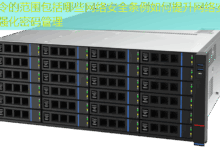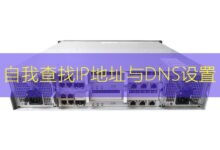在现代网络应用的开发中,选择合适的服务器框架至关重要。本文将对比 Jetty 和 Netty,并指导你如何在两者中设置一个简单的 HTTP 服务。我们的目标是在这两种技术中搭建基本的 HTTP 服务并进行比较,以便你可以根据项目需求做出明智的选择。

准备工作
在进行任何实际操作之前,确保你已安装以下软件:
- Java Development Kit (JDK)(建议使用 8 及以上版本)
- Maven(用于项目依赖管理)
此外,请确保你的开发环境(IDE 或文本编辑器)已就绪。本文假设你已具备基本的 Java 编程知识。
使用 Jetty 搭建 HTTP 服务
步骤 1: 创建 Maven 项目
首先,在终端中使用 Maven 创建一个新项目:
mvn archetype:generate -DgroupId=com.example -DartifactId=jetty-example -DarchetypeArtifactId=maven-archetype-quickstart -DinteractiveMode=false步骤 2: 添加 Jetty 依赖
打开 `pom.xml` 文件,添加 Jetty 依赖:
org.eclipse.jetty
jetty-server
9.4.44.v20210927
org.eclipse.jetty
jetty-servlet
9.4.44.v20210927
步骤 3: 编写服务器代码
在 `src/main/java/com/example` 创建一个 `JettyServer.java` 文件,并输入以下代码:
import org.eclipse.jetty.server.Server;
import org.eclipse.jetty.servlet.ServletContextHandler;
import org.eclipse.jetty.servlet.ServletHolder;
import javax.servlet.http.HttpServlet;
import javax.servlet.http.HttpServletRequest;
import javax.servlet.http.HttpServletResponse;
public class JettyServer {
public static void main(String[] args) throws Exception {
Server server = new Server(8080);
ServletContextHandler context = new ServletContextHandler(ServletContextHandler.SESSIONS);
context.setContextPath("/");
server.setHandler(context);
context.addServlet(new ServletHolder(new HttpServlet() {
protected void doGet(HttpServletRequest req, HttpServletResponse resp) {
resp.setContentType("text/html;charset=utf-8");
resp.setStatus(HttpServletResponse.SC_OK);
try {
resp.getWriter().println("
Hello from Jetty
");
} catch (Exception e) {
e.printStackTrace();
}
}
}), "/*");
server.start();
server.join();
}
}
步骤 4: 启动 Jetty 服务
在终端中运行以下命令:
mvn clean package exec:java -Dexec.mainClass="com.example.JettyServer"打开浏览器访问 http://localhost:8080,你应该会看到 “Hello from Jetty” 的提示。
使用 Netty 搭建 HTTP 服务
步骤 1: 创建 Maven 项目
同样,创建一个新的 Maven 项目用于 Netty:
mvn archetype:generate -DgroupId=com.example -DartifactId=netty-example -DarchetypeArtifactId=maven-archetype-quickstart -DinteractiveMode=false步骤 2: 添加 Netty 依赖
在 `pom.xml` 中添加 Netty 依赖:
io.netty
netty-all
4.1.68.Final
步骤 3: 编写服务器代码
在 `src/main/java/com/example` 创建一个 `NettyServer.java` 文件,输入以下代码:
import io.netty.bootstrap.ServerBootstrap;
import io.netty.channel.ChannelFuture;
import io.netty.channel.ChannelInitializer;
import io.netty.channel.EventLoopGroup;
import io.netty.channel.nio.NioEventLoopGroup;
import io.netty.channel.socket.SocketChannel;
import io.netty.channel.socket.nio.NioServerSocketChannel;
import io.netty.handler.codec.http.HttpObjectAggregator;
import io.netty.handler.codec.http.HttpRequestDecoder;
import io.netty.handler.codec.http.HttpResponseEncoder;
public class NettyServer {
public static void main(String[] args) throws Exception {
EventLoopGroup bossGroup = new NioEventLoopGroup();
EventLoopGroup workerGroup = new NioEventLoopGroup();
try {
ServerBootstrap b = new ServerBootstrap();
b.group(bossGroup, workerGroup)
.channel(NioServerSocketChannel.class)
.childHandler(new ChannelInitializer() {
@Override
public void initChannel(SocketChannel ch) {
ch.pipeline().addLast(new HttpRequestDecoder());
ch.pipeline().addLast(new HttpResponseEncoder());
ch.pipeline().addLast(new SimpleHttpHandler());
}
});
ChannelFuture f = b.bind(8081).sync();
f.channel().closeFuture().sync();
} finally {
workerGroup.shutdownGracefully();
bossGroup.shutdownGracefully();
}
}
}
你需要创建一个 `SimpleHttpHandler` 类来处理 HTTP 请求,代码示例如下:
import io.netty.channel.ChannelHandlerContext;
import io.netty.channel.SimpleChannelInboundHandler;
import io.netty.handler.codec.http.FullHTTPResponse;
import io.netty.handler.codec.http.HttpObject;
public class SimpleHttpHandler extends SimpleChannelInboundHandler {
@Override
protected void channelRead0(ChannelHandlerContext ctx, HttpObject msg) {
FullHTTPResponse response = new FullHTTPResponse();
response.setContent("Hello from Netty");
ctx.writeAndFlush(response);
}
}
步骤 4: 启动 Netty 服务
在终端中运行以下命令:
mvn clean package exec:java -Dexec.mainClass="com.example.NettyServer"打开浏览器访问 http://localhost:8081,你应该会看到 “Hello from Netty” 的提示。
总结与比较
通过上述步骤,你已经分别使用 Jetty 和 Netty 搭建了一个简单的 HTTP 服务。以下是两者的比较:
- Jetty 更加易于使用,适合快速开发,功能齐全,适合部署小型和中型应用。
- Netty 提供了更高的性能和灵活性,适合于要求高并发和高性能的网络应用。
注意事项
在实际运用中,请注意:
- 确保 Java 环境变量已正确配置。
- 处理异常时,确保清晰的日志输出以便后期调试。
- 根据项目需求选择合适的框架,避免过度设计。
本文希望通过比较和示例代码,帮助你更好地理解 Jetty 和 Netty 的特点和使用方式,从而为你今后的开发提供参考。







